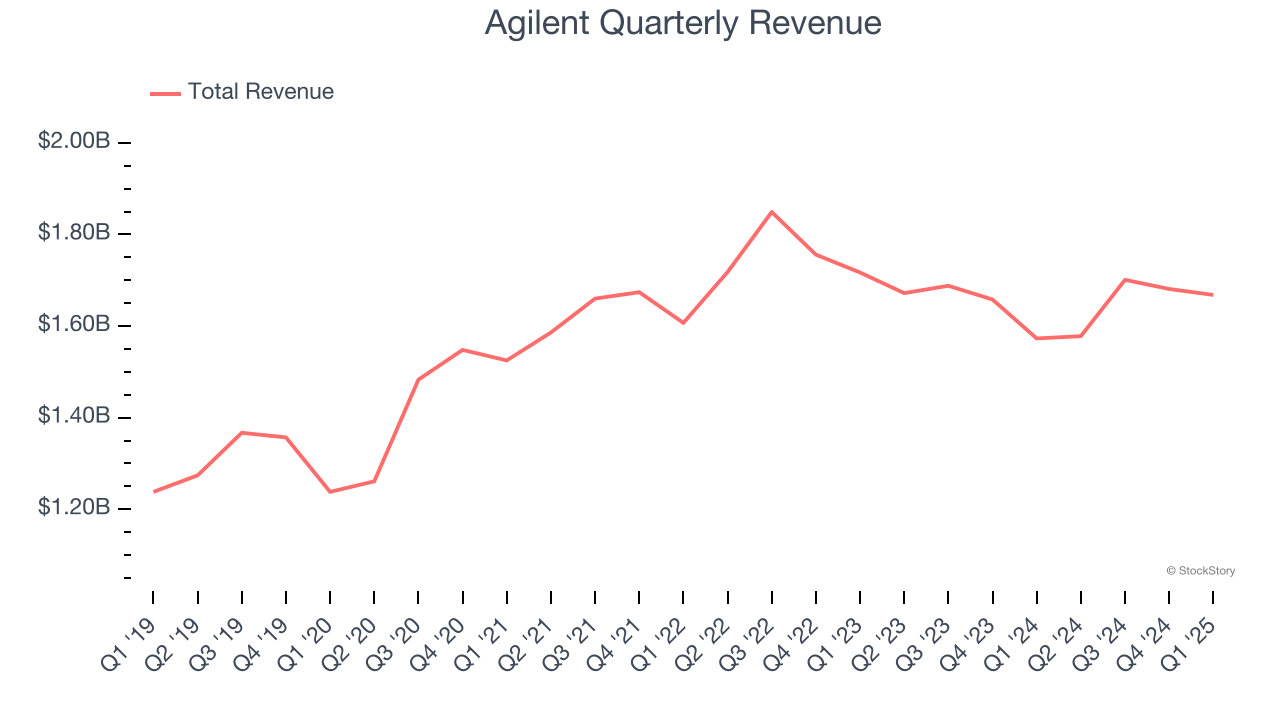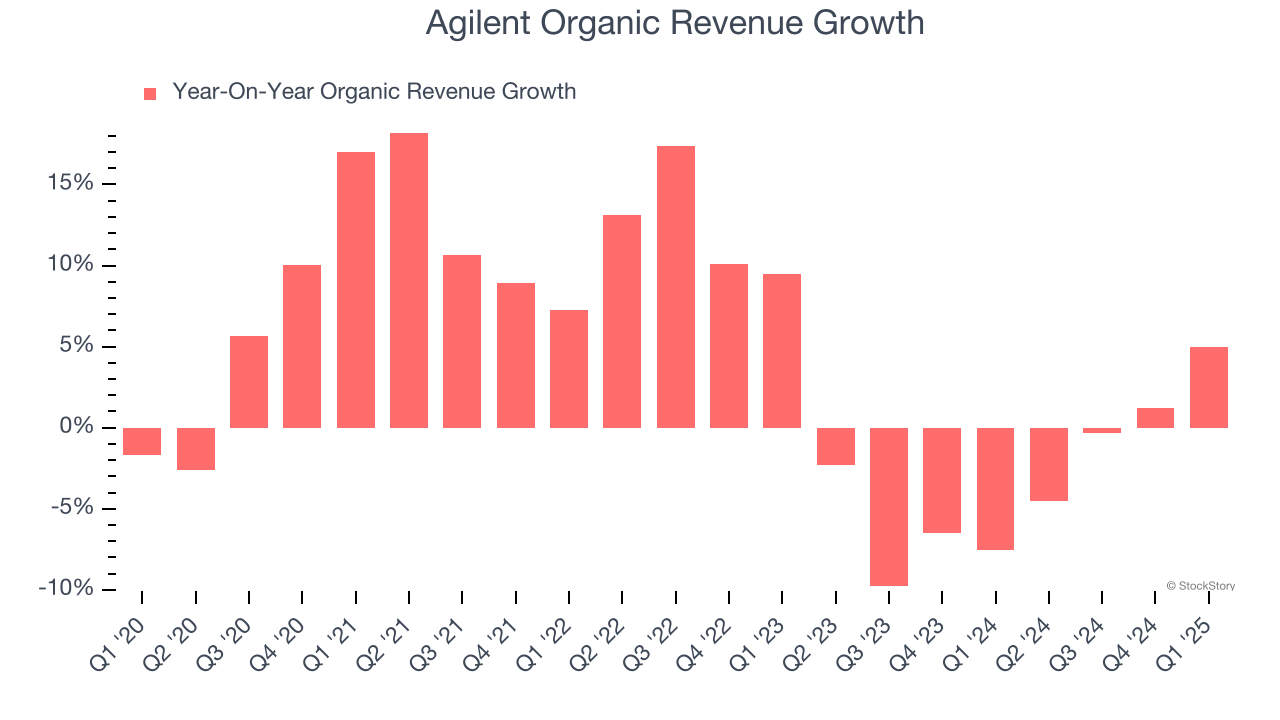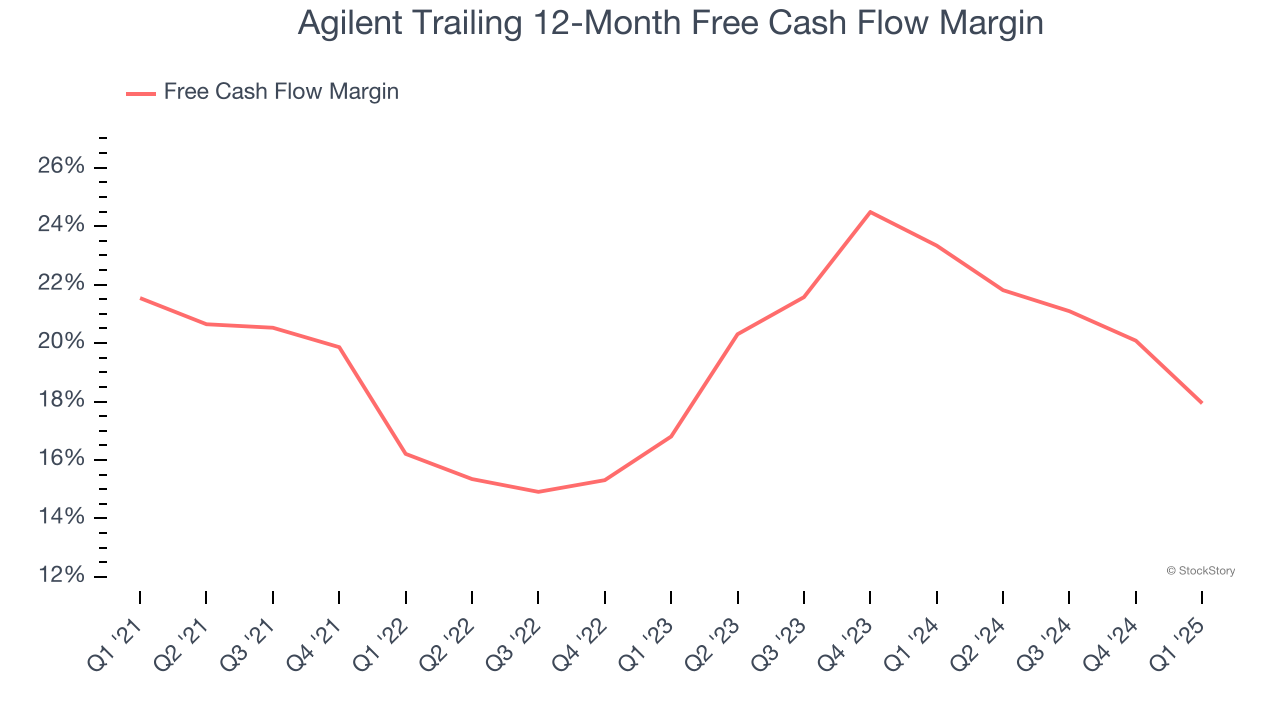
Over the last six months, Agilent’s shares have sunk to $121.38, producing a disappointing 11.7% loss - a stark contrast to the S&P 500’s 6.2% gain. This may have investors wondering how to approach the situation.
Is there a buying opportunity in Agilent, or does it present a risk to your portfolio? Get the full breakdown from our expert analysts, it’s free.
Why Is Agilent Not Exciting?
Despite the more favorable entry price, we're sitting this one out for now. Here are three reasons why there are better opportunities than A and a stock we'd rather own.
1. Long-Term Revenue Growth Disappoints
Reviewing a company’s long-term sales performance reveals insights into its quality. Even a bad business can shine for one or two quarters, but a top-tier one grows for years. Unfortunately, Agilent’s 4.8% annualized revenue growth over the last five years was mediocre. This fell short of our benchmark for the healthcare sector. 
2. Core Business Falling Behind as Demand Declines
In addition to reported revenue, organic revenue is a useful data point for analyzing Research Tools & Consumables companies. This metric gives visibility into Agilent’s core business because it excludes one-time events such as mergers, acquisitions, and divestitures along with foreign currency fluctuations - non-fundamental factors that can manipulate the income statement.
Over the last two years, Agilent’s organic revenue averaged 3.1% year-on-year declines. This performance was underwhelming and implies it may need to improve its products, pricing, or go-to-market strategy. It also suggests Agilent might have to lean into acquisitions to grow, which isn’t ideal because M&A can be expensive and risky (integrations often disrupt focus). 
3. Free Cash Flow Margin Dropping
If you’ve followed StockStory for a while, you know we emphasize free cash flow. Why, you ask? We believe that in the end, cash is king, and you can’t use accounting profits to pay the bills.
As you can see below, Agilent’s margin dropped by 3.6 percentage points over the last five years. If its declines continue, it could signal increasing investment needs and capital intensity. Agilent’s free cash flow margin for the trailing 12 months was 17.9%.

Final Judgment
Agilent isn’t a terrible business, but it doesn’t pass our bar. Following the recent decline, the stock trades at 20.9× forward P/E (or $121.38 per share). This valuation tells us a lot of optimism is priced in - we think there are better opportunities elsewhere. Let us point you toward one of our all-time favorite software stocks.
Stocks We Like More Than Agilent
Market indices reached historic highs following Donald Trump’s presidential victory in November 2024, but the outlook for 2025 is clouded by new trade policies that could impact business confidence and growth.
While this has caused many investors to adopt a "fearful" wait-and-see approach, we’re leaning into our best ideas that can grow regardless of the political or macroeconomic climate. Take advantage of Mr. Market by checking out our Top 5 Strong Momentum Stocks for this week. This is a curated list of our High Quality stocks that have generated a market-beating return of 183% over the last five years (as of March 31st 2025).
Stocks that made our list in 2020 include now familiar names such as Nvidia (+1,545% between March 2020 and March 2025) as well as under-the-radar businesses like the once-small-cap company Exlservice (+354% five-year return). Find your next big winner with StockStory today.





